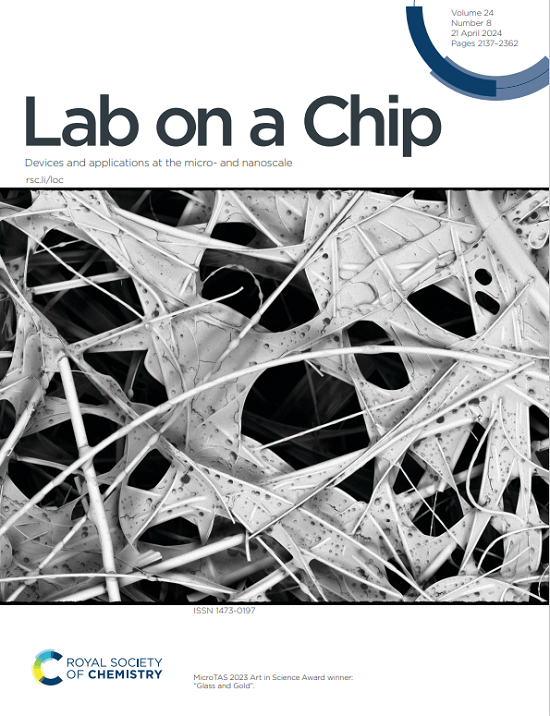Lossless Altered Histone Modification Analysis System (LAHMAS)
IF 5.4
2区 工程技术
Q1 BIOCHEMICAL RESEARCH METHODS
引用次数: 0
Abstract
Miniaturized biological assays using microfluidics have the potential to enhance assay sensitivity, reduce reagent consumption, and increase throughput. However, challenges to miniaturization include increased platform complexity and increased surface to volume ratio leading to risk of evaporation and analyte loss through surface binding. Exclusive Liquid Repellency (ELR) enables open microfluidic systems that minimize these challenges through an oil phase that protects small aqueous volumes from temperature fluctuation and evaporation while eliminating surface fouling that lead to sample loss. Here we report a novel microfluidic platform leveraging ELR and Exclusion-based Sample Preparation (ESP) for the miniaturization of CUT&Tag a complex multistep biological assay. The resultant Lossless Altered Histone Modification Analysis System (LAHMAS) employs a PDMS-silane treated glass surface immersed in silicone oil to facilitate lossless liquid handling and prevent sample evaporation. The device design, compatible with standard laboratory equipment, allows for effective processing of cell inputs as low as 100 cells with higher fidelity than macroscale CUT&Tag facilitating accurate chromatin profiling of low input and rare cell samples.无损组蛋白修饰分析系统(LAHMAS)
使用微流体的小型化生物测定具有提高测定灵敏度、减少试剂消耗和提高通量的潜力。然而,小型化面临的挑战包括平台复杂性的增加和表面体积比的增加,从而导致蒸发和分析物因表面结合而损失的风险。独有的液体拒驱性(ELR)使开放式微流体系统能够通过油相保护小水体积免受温度波动和蒸发的影响,同时消除导致样品损失的表面污垢,从而最大限度地减少这些挑战。在这里,我们报告了一种利用ELR和排斥样品制备(ESP)的新型微流控平台,用于CUT&;Tag的小型化,这是一种复杂的多步骤生物试验。由此产生的无损改变组蛋白修饰分析系统(LAHMAS)采用pdms -硅烷处理的玻璃表面浸泡在硅油中,以促进无损液体处理并防止样品蒸发。该设备设计与标准实验室设备兼容,可有效处理低至100个细胞的细胞输入,保真度高于宏观CUT&;Tag,有助于对低输入和稀有细胞样本进行准确的染色质分析。
本文章由计算机程序翻译,如有差异,请以英文原文为准。
求助全文
约1分钟内获得全文
求助全文
来源期刊

Lab on a Chip
工程技术-化学综合
CiteScore
11.10
自引率
8.20%
发文量
434
审稿时长
2.6 months
期刊介绍:
Lab on a Chip is the premiere journal that publishes cutting-edge research in the field of miniaturization. By their very nature, microfluidic/nanofluidic/miniaturized systems are at the intersection of disciplines, spanning fundamental research to high-end application, which is reflected by the broad readership of the journal. Lab on a Chip publishes two types of papers on original research: full-length research papers and communications. Papers should demonstrate innovations, which can come from technical advancements or applications addressing pressing needs in globally important areas. The journal also publishes Comments, Reviews, and Perspectives.
 求助内容:
求助内容: 应助结果提醒方式:
应助结果提醒方式:


